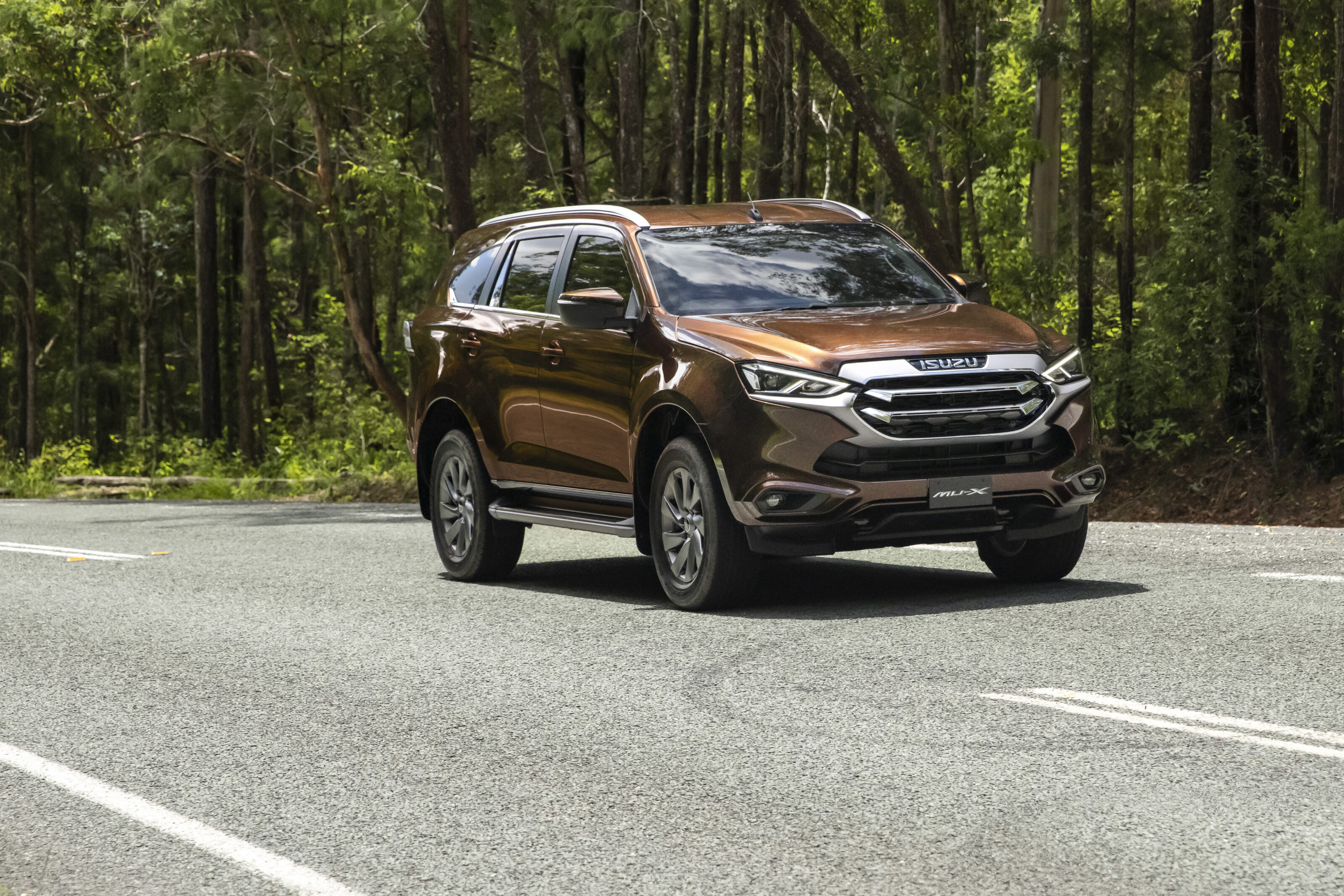Score breakdown
Things we like
- Better use of interior space
- Much improved interior
- Handy on-road ride and handling
- Way better safety package
Not so much
- Loud engine when cold
- Media system a bit ho-hum
- Big price rise from the old car
Isuzu probably couldn’t believe its luck with the old MU-X. Despite being as old as the hills and having to labour with its association to Holden’s Colorado 7/Trailblazer, it forged a far more devoted fanbase than the General could. I found the MU-X a bit puzzling on paper. I’m not a big fan of SUVs with ute underpinnings, it was missing a lot of safety features and the only obvious benefit was a price sharper than Jimmy Carr’s tongue.
But Isuzu knew all those things too, pitching the car at adventurous families – or at least families who saw themselves as such – and even when COVID slammed into the good ship Australian Car Market, Isuzu had by far the most sensible stay-at-home ad of them all. I think that’s because the company seemed acutely aware that a bit of brand-building was an opportunity not to be missed in the MU-X’s second-biggest market after Thailand, where it’s made.
And so we come to the new, second-generation MU-X, fresh off the boat from the Thai factory from whence the D-Max and Mazda BT-50 also spring. The bare spec sheet is now covered in a lot more meat, so prices are up. But it’s clearly a more sophisticated machine ready to take on Pajero Sport and Toyota’s triple threat in the large SUV market.
Pricing and Features
There are three specification levels in the new MU-X range, all of which are offered with a choice of 4×2 and 4×4 drivetrains.
The top of the range LS-T 4×4 is now a healthy $65,900 before on-roads. At its introduction, you can grab one for $63,900 drive-away, which is pretty good going compared to the list price. One step down is the LS-U and I’m thinking that this is probably the sweet spot of the range at $59,900 for the 4×4. You can save six grand if you get a 4×2 but I’m not entirely sure what would be the point of that, however it’s there if you need it.
On the LS-U you get 18-inch wheels, a 9.0-inch media screen, LED interior lighting, leather wheel and shifter, cloth seats (underselling it slightly – the cloth seems very durable), dual-zone climate control, front and rear parking sensors, reversing camera, keyless entry and start, remote start, sat-nav, auto-locking, auto-levelling bi-LED headlights with auto high beam, auto wipers and a powered tailgate.
I can’t in all honesty say that the gap between the LS-U and LS-T is worth six thousand dollars (list price, anyway), so have a really, really good look at the spec sheet and decide whether leather seats and 20-inch rims (and some other bits and bobs) is worth the extra.
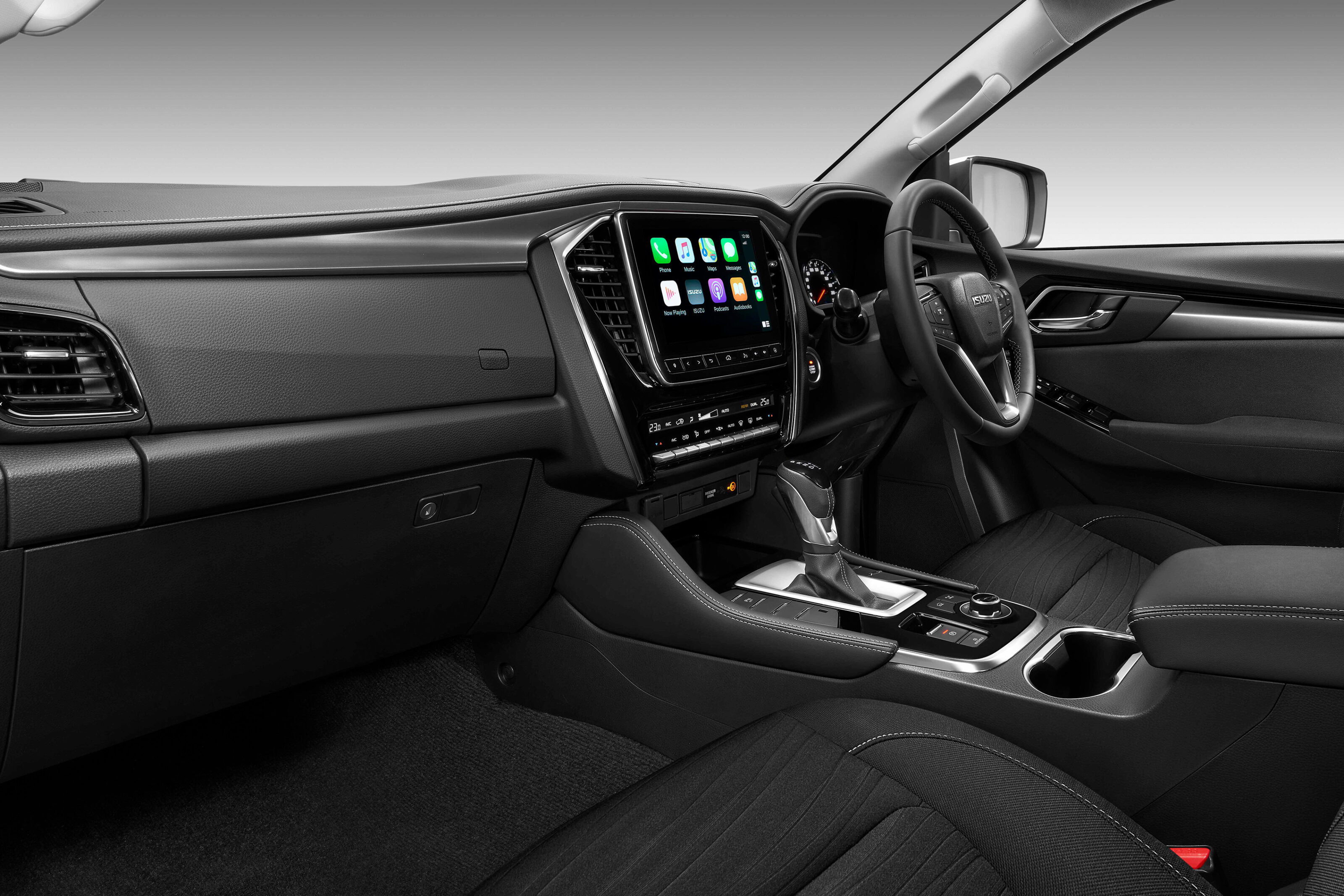
I can’t in all honesty say that the gap between the LS-U and LS-T is worth six thousand dollars, so have a really, really good look at the spec sheet.
The stereo and media system features eight speakers, Android Auto (via USB) and wireless Apple CarPlay, but no wireless charging pad. It also has DAB+ which is great if you live in a city without tunnels.
Perhaps the most impressive change over the old MU-X is the huge list of safety features. By the time it finally bowed out, the previous model was very skinny on that front. Isuzu calls the safety pack Isuzu Intelligent Driver Assistance System (IDAS) and it packs eight airbags (the curtain reaching all the way to the third row), the usual stability and traction controls, forward AEB with turn assist, forward collision warning, post-collision braking (which stops you having a second accident with a wall or another car), traffic sign recognition, misacceleration mitigation (decides whether you really wanted to prod the throttle), lane departure warning, lane-keep assist, lane departure prevention, driver attention detection, blind-spot monitoring, rear cross-traffic alert, hill descent control, trailer sway control, rollover mitigation, reversing camera and tyre pressure monitoring.
It’s a massive and commendable improvement on the old car and explains a lot of the price rise.
Only the middle row features child seat anchoring, with two ISOFIX points and three top-tether points.
ANCAP is yet to throw the MU-X at a wall, so there isn’t yet a safety rating.

Comfort and Space
It’s a monster unit and with that comes a ton of space. The previous car distinguished itself among its competitors by having a third row that was not only easy to get to, you could actually survive further than a trip to the shops. And so it is with the MY22.
The middle row flips and tumbles with the pull of a lever and once you’ve hoisted yourself up into the car, it’s reasonably easy to step into the back row and choose one of the two seats. Both seats score cupholders, a bit of storage and air vents and rather crucially, there’s a footwell so your knees aren’t right up in your face. It is – whisper it – actually comfortable.
With the third row in use, boot space is up by 25 litres to 311, which is larger than many small hatchbacks. And some compact SUVs, come to think of it. Folding the third row is easy – pull the tapes on the seatbacks and they flip forward and hinge down to create a flat floor and 1119 litres, 68 more than before. There is also a storage box under the aft section of the floor at the loading lip, which is afforded by the spare being slung underneath.
Fold everything flat and you have 2138 litres, 24 fewer than before, but you won’t miss them given a) that’s a colossal amount of space and b) you’d have to have built up a very specific need for those 24 litres in the old car. I mean, I’m not judging, but hopefully you’ll be okay.
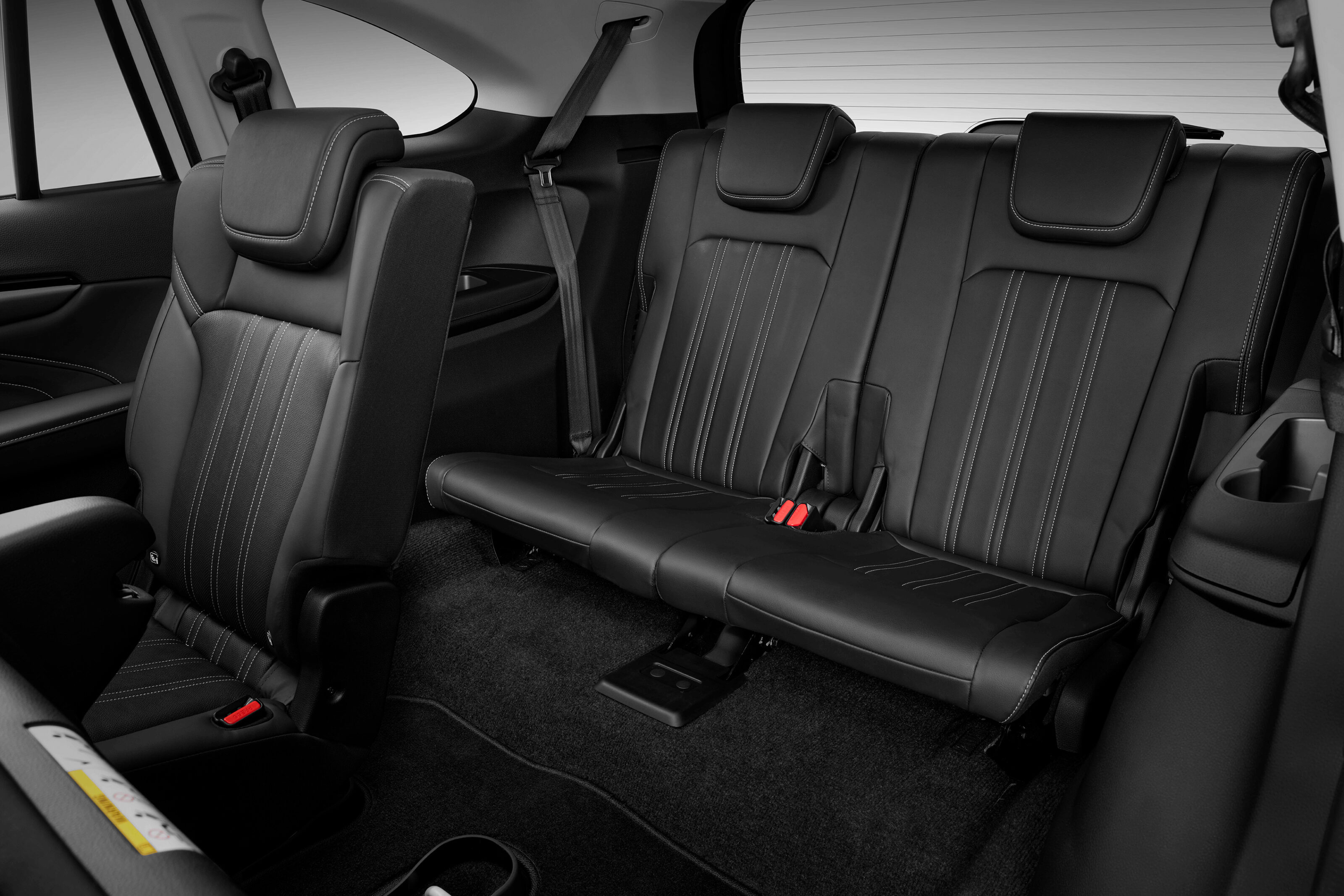
Middle row seating is pretty firm but you get cupholders in the armrest and bottle holders in the doors, as well as air vents and hefty grab handles. There are actually 12 cupholders in the car, so you’ll be doing lots of toilet stops on long trips if my experience of making liquids available to children is anything to go by.
One of the things I really didn’t like about the old car was the awkward positioning of the middle row. Despite a nice big opening, the middle row was set too far forward in relation to the B-pillar, so getting in was more of a mission than it should have been and felt a tad claustrophobic. The new car appears to have solved that problem and there’s a better feeling of space because your nose isn’t in line with a big chunk of metal.
Front seat passengers also share a pair of cupholders and perch on comfortable – and firm – seats. You still sit high enough to be a danger to aviation if you flip the bird at someone, an old school affectation that has remained in place for this second generation.
The new dash architecture is far more appealing than the seriously dated old car. It was old looking the day it launched and failed to age well along with some pretty scratchy and cheap plastics and cabin materials. The new car is a big step up from that. It’s hardly avant-garde – and the blingy signature air vents either side of the touchscreen remain – but it’s more contemporary if totally unadventurous.

On the road
One thing that really stood out to me with the old car was the engine. I quite liked its niche specification – a 3.0-litre four-cylinder engine, a configuration it shares with the Porsche 968. Well, sort of, they’re actually completely different given the MU-X is a turbo-diesel and the 968 a 30-year-old sports coupe, but it’s kind of fun to think about things that way when you’re dealing with a giant SUV.
The engine is closely related to the 4JJ1 of the older car and that’s reflected in the name, 4JJ3-TCX. Power is up by 10kW to 140kW (arriving at 3600rpm) while torque is up by 20Nm. There’s already 300Nm at 1000rpm, 400Nm at 1400rpm (and it doesn’t fall below that figure until 3250rpm) while peak torque of 450Nm is available from 1600 to 2600rpm. It’s lazy in the good way you want when you’re hub-deep in mud with low-range engaged or you’re dragging an oversized boat behind you like you’re in a television ad for the car.
Isuzu says that there’s a new engine block, cylinder head, crankshaft and aluminium pistons as well as a new intake system. The new engine also has a lean NOx trap and a new catalytic converter to reduce NOx and hydrogen sulphide emissions and there’s a maintenance-free particulate filter.
So how is it? On a cold start, it’s still really noisy, surprisingly so. We’re not talking semi-trailer idling at 5 am noisy, but it’s a bit of a shock to the system after the procession of quiet Korean and European diesels I’m more used to. Even the Pajero Sport has more decorum. As before, once you’re on the move the sound basically disappears making it a quiet, long-legged cruiser, with barely a peep from the big wing mirrors. It’s not quick off the line, even with a determined prod of the throttle and with the 2H engaged, removing any extra friction in the drivetrain. It gets on with the job of forward motion without getting too bothered about 0-100km/h nonsense. The Aisin six-speed automatic has had some work done for the transition to the MY22, with quicker shifts (yep) and smoother shifts (also yep).
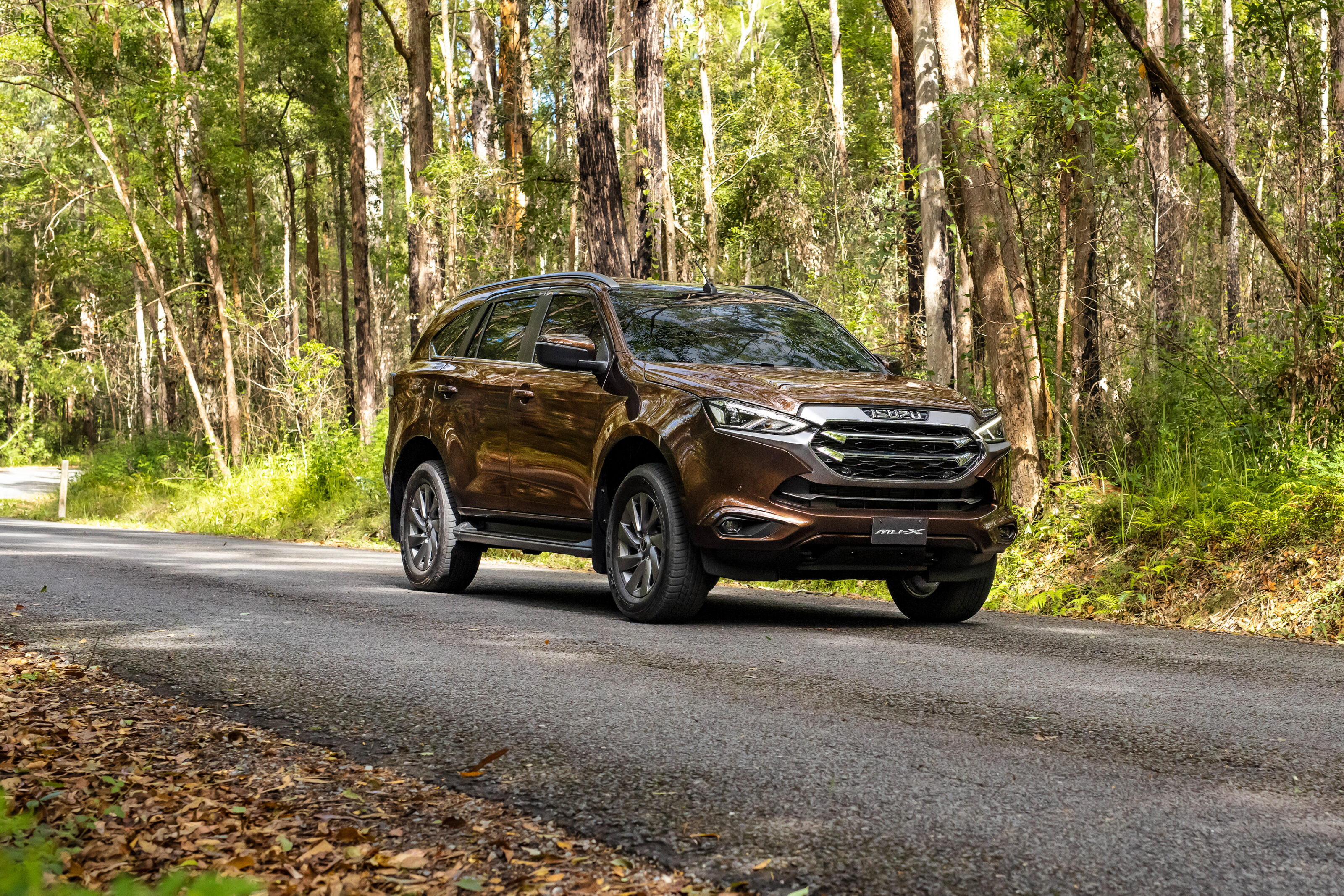
A lot of the new MU-X’s ladder-frame underguts are shared with the D-Max, which arrived late in 2020. The MU-X’s rear subframe is different, though, with a multi-link rear end delivering a much better ride than the old car and will tow 3.5-tonnes of braked load. Isuzu says over half of MU-X owners actually tow stuff and go touring rather than just dragging jet-skis down to the boat ramp, which I’ve seen done with a VW Polo.
The front end’s double wishbone suspension has also come in for an overhaul which, again, is clear by the way the car rides and is much better at change-of-direction stuff and a lot less wallowy. This is courtesy of stiffer springs and general revisions of bits and pieces. It’s much happier on the road than the old car and feels far less like an old bus. On turn-in, the new MU-X is more responsive and the decrease in body roll means that this isn’t a liability. It felt way nicer on the motorway than the old car and more amenable to being thrown around on the back streets through roundabouts and a series of awkward intersections. The bigger front brakes helped here, too.
All these suspension and towing improvements mean the GVM is up by 100kg to 2800kg while the GCM is a whopping 5900kg, up from the already impressive 5850kg. Front axle load is up by 100kg and the rear can cop another 50kg. You could almost take an Instagram influencer and all their gear across the desert with this kind of payload.
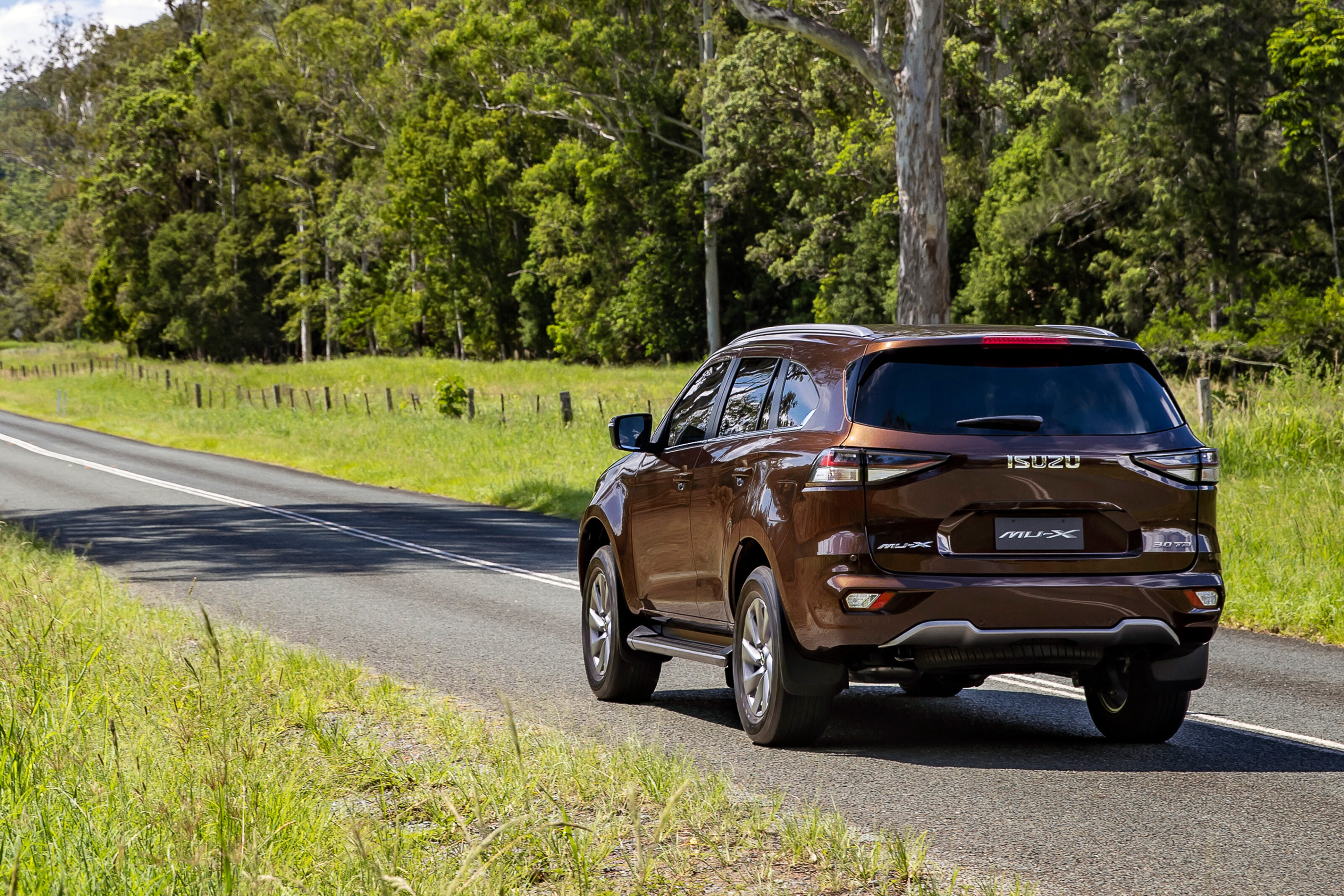
Steering is a bit woolly, though, and achingly slow when you’re doing a three-point turn, but again, given owners actually do muddy, filthy stuff with an MU-X, it’s the right choice for the car. Speaking of muddy stuff, you can also fit the car with a snorkel that feeds into a pre-fabbed induction pathway. Isuzu again says this is all for us here in Australia and should result in cheaper fitting costs.
A new 80-litre fuel tank extends the on-paper range, too, with a combined cycle average of 8.3L/100km. If you can get the highway figure of 7.3L/100km, you can comfortably get between Sydney and either Brisbane or Melbourne on a tank. 4×2 versions use about half a litre less in each measurement cycle. The week I had the car I managed a pretty impressive 8.5L/100km in a 50:50 highway and suburbia split.
The vital off-road stats are 285mm of ground clearance, 29.2-degree approach, 23.1 ramp over and 26.9 departure angles. The 4×4 offers 2H, 4H and 4L, a rear diff lock and rough terrain mode and none of the endless surface selection nonsense of some other cars. Underneath you’ll find 1.5mm-thick steel and 5mm-thick poly composite underbody armour and the fuel tank is wrapped in aluminium shielding.

Ownership
Isuzu offers a six-year/15,000km with up to seven years roadside assistance if you return to an Isuzu dealer for servicing and they want you back every 12 months or 15,000km.
Capped-price servicing covers the first seven services and totals $3373 over that period, coming to an average of $481 per service. The cheapest is the 75,000km service at $299 and the most expensive is $749 for the 90,000km service.
Isuzu says that due to a variety of changes (including maintenance-free sealed front wheel bearings), the new MU-X is 12 per cent cheaper to maintain over seven years.
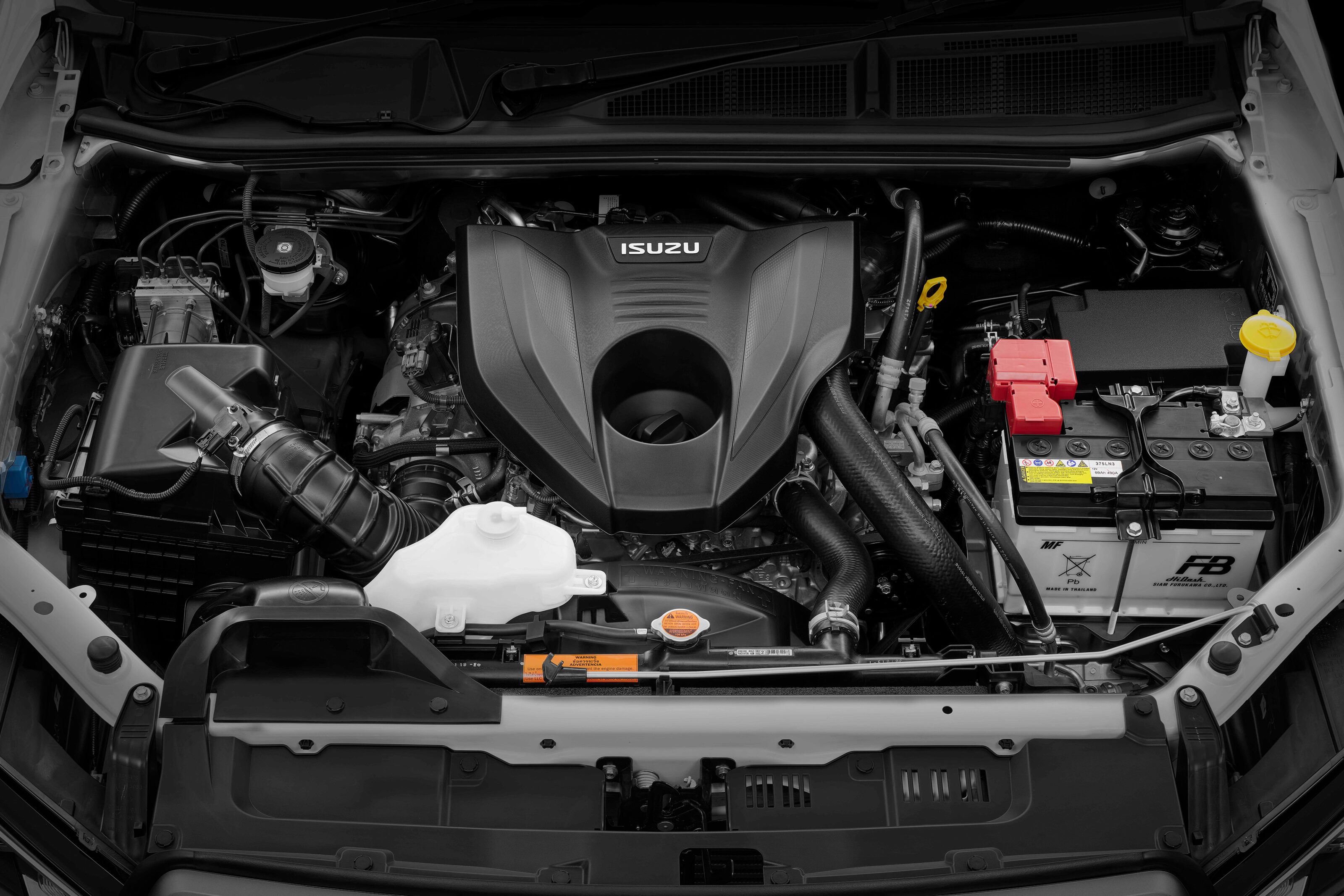
VERDICT
Basically, it’s a much better car than before. Apart from the clattering engine when it’s cold, the driving experience is a vast improvement.
My wife still doesn’t like it, but the complaints were far less bitter over the old car. She is a famously hard marker, so that’s a good result for the MU-X.
We’re about to find out if buyers are going to cop these big increases to the price of admission. While the old MU-X was a bit of a cow-pusher, it was a heap of car for the money and came with the kind of reputation some of its rivals could only dream of.
With a bit more money on the table, buyers’ eyes might wander a bit more determinedly. But with all that extra safety gear, improved cabin and dead-set ruggedness, it’s a compelling proposition.
| Body | five-door large SUV |
|---|---|
| Drive | AWD |
| Engine | 3.0-litre four cylinder turbodiesel |
| Transmission | six-speed automatic |
| Power | 140kW @ 3600rpm |
| Torque | 450Nm @ 1600-2600rpm |
| Bore stroke (mm) | 95.4 x 104.9 |
| Compression ratio | 8.3 : 1.0u00a0 |
| 0-100km/h | 11 sec (estimate) |
| Fuel consumption | 8.3L/100km (combined) |
| Weight | 2155kg |
| Suspension | double wishbone (front) / multi-link (rear) |
| L/W/H | 4850mm/1870mm/1825mm |
| Wheelbase | 2855mm |
| Brakes | 320mm ventilated disc (front) / 318mm solid disc (rear) |
| Tyres | 265/60R18 Bridgestone 684II HT |
| Wheels | 18-inch alloy wheels (full-size spare) |
| Price | $59,900 + ORC |
Score breakdown
Things we like
- Better use of interior space
- Much improved interior
- Handy on-road ride and handling
- Way better safety package
Not so much
- Loud engine when cold
- Media system a bit ho-hum
- Big price rise from the old car


